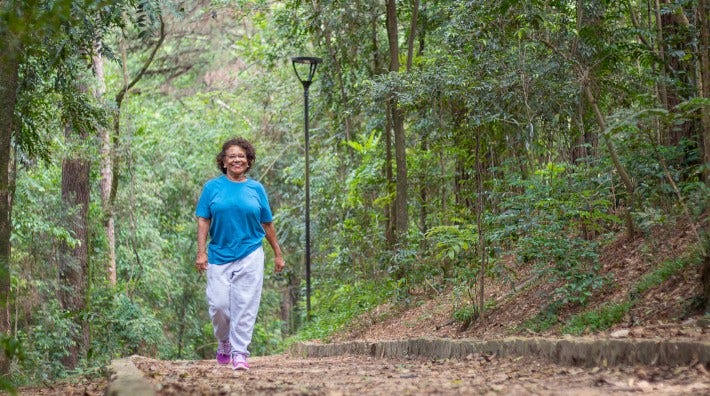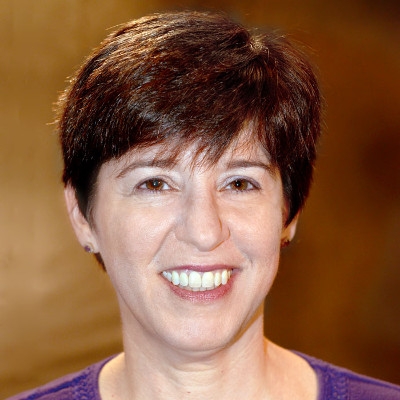Walk Your Way to Health

Walking can be one of the best ways to get exercise and stay healthy. You can walk alone, with a pet, or with a partner – even a socially distant one if you walk at least 6 feet apart or on opposite sides of the street. You also can try chatting with someone on a hands-free device while walking. All you need is a good pair of shoes and a safe place to walk.
Brisk walking can help you maintain a healthy weight, strengthen your bones and muscles, and improve your balance and coordination. It can boost your mood and help you sleep better. It also burns calories: a 150-pound person walking briskly will burn about 297 calories per hour. Research shows that getting regular physical activity and staying at a healthy weight can help reduce your risk of cancer as well as heart disease and diabetes.
A brisk walk counts as a moderate-intensity activity. The American Cancer Society recommends that adults get at least 150 minutes of moderate-intensity or 75 minutes of vigorous-intensity activity each week. If that’s more than you can do right now, do as much as you can and work your way up. According to the Centers for Disease Control and Prevention, even just 5 minutes of physical activity has real health benefits.
While a little walking is good, more is even better. The faster, farther, and more often you walk, the greater the benefits. A recent study found that higher step counts were linked to lower death rates from heart disease and cancer. To get the most out of walking, make sure you’re ready before hitting the road. Follow these tips from Mayo Clinic:
- Set a goal for how long you want to walk.
- Be sure you’re wearing comfortable, supportive footwear with a roomy toe box.
- Warm up by walking at a slow pace for about 5 minutes.
- End by walking slowly for about 5 minutes and stretching. This cools you down and reduces stress on your muscles.
- Reviewed by

The American Cancer Society medical and editorial content team
Our team is made up of doctors and oncology certified nurses with deep knowledge of cancer care as well as journalists, editors, and translators with extensive experience in medical writing.
American Cancer Society news stories are copyrighted material and are not intended to be used as press releases. For reprint requests, please see our Content Usage Policy.



